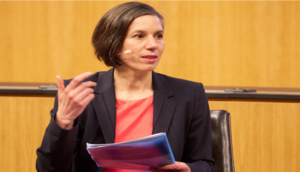In 2023, the nine nuclear-armed states spent a combined total of $91,393,404,739 on their arsenals – equivalent to $2,898 a second. ICAN’s latest report “Surge: 2023 Global nuclear weapons spending” shows $10.7 billion more was spent on nuclear weapons in 2023 than in 2022.
Who spent what on their nuclear arsenal in 2023?
In 2023 China, France, India, Israel, North Korea, Pakistan, Russia, the UK and US spent a combined $91.4 billion on their nuclear arms, which breaks down to $173,884 per minute, or $2,898 a second. The United States’ share of total spending, $51.5 billion, is more than all the other nuclear-armed countries put together and accounts for 80% of the increase in nuclear weapons spending in 2023. The next biggest spender was China which expended $11.8 billion with Russia spending the third largest amount at $8.3 billion. The United Kingdom’s spending was up significantly for the second year in a row with a 17% increase to $8.1 billion.
$387 billion in 5 years
“Surge” is the 5th edition of ICAN’s global nuclear weapons spending report. In the last 5 years, $387 billion has been spent on nuclear weapons, with the yearly spending increasing by 34% from $68.2 billion to $91.4 billion per year, as all nine nuclear-armed states continue to modernise, and in some cases expand, their arsenals. Alicia Sanders-Zakre, co-author of the report noted: “The acceleration of spending on these inhumane and destructive weapons over the past five years is not improving global security but posing a global threat.”
Who profits from this surge in nuclear spending?
Globally, nuclear-armed countries have ongoing contracts with companies to produce nuclear weapons worth a total of at least $387 billion, continuing in some cases through 2040. In 2023, companies involved in the production of nuclear weapons received new contracts worth just under $7.9 billion. In the US and France alone (the countries for which figures can be obtained) these firms spent $118 million on lobbying.
These large profits incentivise nuclear weapons manufacturers to spend millions – at least $6.3 million in 2023 – to influence government policy and public attitudes towards nuclear weapons through supporting think tanks. In 2023, at least $123 million was spent hiring over 540 lobbyists and providing financing for major think tanks that influence the nuclear debate. “Surge” exposes these connections.
The opportunity cost of nuclear weapons
The billions of dollars squandered on nuclear weapons every year is an unacceptable misallocation of public funds. Instead of pouring much-needed resources into a reckless race with weapons of mass destruction, the 9 nuclear-armed states could pay for vital services for their citizens or help address existential global crises. $91.4 billion a year could pay for wind power for more than twelve million homes to help combat climate change, or cover 27% of the funding gap to fight climate change, protect biodiversity and cut pollution. One minute of 2023 nuclear weapons spending could have instead paid for planting one million trees. Five years of nuclear weapons spending could have fed 45 million people who are currently facing famine- for most of their lives.
That is why ICAN is calling for a global week of action from September 16 to 22, 2024. Our week of action will take place just as countries around the world come together to find solutions to the greatest global challenges of our time. From now until states gather, we are inviting people all around the world to tell us what they would prefer to see the money spent on, and in September we will push together with one clear message: “No Money for Nuclear Weapons!”




